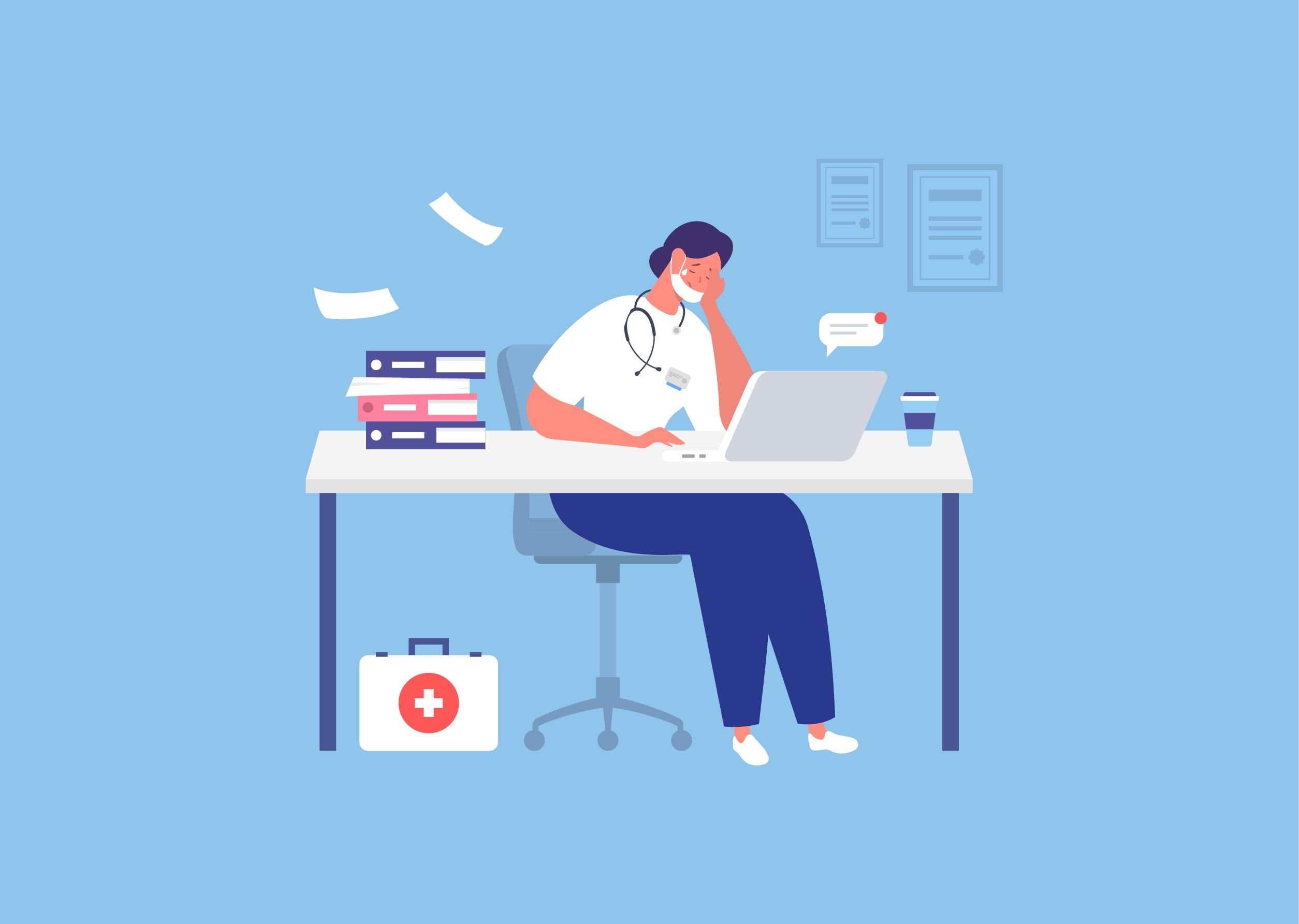Article
Is This the Time for Mental Health Check-ups?
Author(s):
This blog address the multidisciplinary approach to mental health care.
Over 30 years ago, I made recommendations for a regular mental health check-up as part of any physical check-up.1 I’m sure I wasn’t the only one, but such recommendations did not seem to catch on. Until now, perhaps.
Historical perspective
To address the multidisciplinary approach to mental health care, I wrote a chapter titled “Primary Prevention and the Mental Health Check-up.”1 The quest for primary prevention-that is, stopping the emergence of an impending disorder- goes back at least a century. Fifty years ago, under the leadership of Gerald Caplan, MD, prevention was included as one of the priorities in the original Community Mental Health Center Act, designed to provide better mental health in the public sector. However, those federal guidelines were dismantled when block grants, whereby the funds previously geared for mental health could also be used for roads and other public projects by the states, were substituted instead by President Reagan in 1980.
In the private sector, the original health maintenance organizations (HMOs) tried to incorporate exactly what the name implied-maintenance of health and mental health. These, too, were transformed, under President Nixon. Laws were passed allowing HMOs to become for-profit, soon leading to the managed care industry and a lack of spending potentially short-term profitable funds for the less certain long-term benefits of prevention.2
The mental health check-up had been conceived (at least by me) as both a way to check for undiagnosed disorders, as well as one way to initiate primary prevention. For example, ever since PTSD was added to the diagnostic classification in 1980, there has been a quest-as yet unfulfilled-to prevent the delayed symptoms from the trauma by such interventions as “debriefing” and/or rapid use of a beta-blocker like propranolol.
Although a mental health check-up could have always been a routine part of a physical check-up, it was not. It is not clear why this is, but perhaps the stigma of mental illness, as well as lack of expertise, prevented primary care physicians from routinely doing so.
The current opportunities
Calls for the mental health check-up are coming out of both the United Kingdom and the US.3,4 In the US, with the explicit goal of integrating mental health care into physical health care as part of President Obama’s reform package, the practical structure and locations for the check-up should be emerging soon. Moreover, the Affordable Care Act requires insurance plans to screen for depression.
We can start with wellness. We know that some behavioral habits end up contributing to both medical and psychiatric problems. (Please note that we artificially separate medical and psychiatric, as if psychiatric were not subsumed under medical, both for convenience and clarity). This behavior includes too much smoking (especially cigarettes, but also marijuana), too much alcohol, too much food, too little exercise, and developmental crises. Routine questions about such lifestyle activities, followed by appropriate advice, education, and even personal modeling (physicians not being obese, for instance), may slow or halt adverse habits. Some businesses are even starting to offer incentives to employees who are successful in improving their wellness guidelines. Sometimes, too, such behavior is a warning sign of a full-fledged mental disorder, such as anxiety, depression, or PTSD.
Another way to check for such disorders is through asking simple questions about symptoms, or using one of many brief screening questionnaires. For example, patients are often consciously and/or unconsciously reluctant to convey a history of severe trauma. Using the 21 questions about traumatic experience can help to make this information available.5
In distinguishing normal grief from major depressive disorder (MDD), primary care physicians are often the first contact for patients facing traumatic losses and being unable to sleep. Dr Ronald Pies6 has been developing a practical inventory to help distinguish between the two possibilities that have proven so controversial in the bereavement exclusion in the new DSM-5.
In integrated medical homes, a mental health clinician can be readily consulted if anything is mildly of concern. The importance of early case finding is that it often takes years before treatment is sought for a significant disorder. For bipolar disorders, estimates range up to 10 years before the correct diagnosis is made. That delay belies that treatment in early stages of disorders is often easier, more successful, and less reliant on medication.
It is also important to screen the children of a patient with a significant mental disorder, especially if that patient is in the mothering role. Almost invariably, child-rearing will be adversely affected to some extent. However, such recognition allows for obtaining help with normal child-rearing and even the enhancement of resilience.
Besides medical settings, schools can help to watch for mental health problems. Bullying is a current obvious example. More classes on psychology, both abnormal and positive, can also foster the ideal of self-knowledge, self-scrutiny, and self-enhancement.
Addressing social problems can enhance mental wellness. Poverty, especially paired with the loss of employment, correlates with mental and behavioral problems. The lack of privacy in small or overcrowded dwellings is an additional adverse factor for mental well-being.
Concerns and objections
Many, of course, will still conclude that the mental health check-up is not only unnecessary, but can cause more problems than benefits. To start with, labeling more people with mental problems could increase stigma. On the other hand, more routine mental health check-ups could reduce stigma by normalizing and integrating the mind with the body in a real and tangible way.
Another concern might be that in general medicine, screening can sometimes result in false positives, unnecessary anxiety, more testing, and even death from surgery. The new DSM-5, with the new diagnoses with scant real-life trials, offers the potential that what is “normal” will be constricted. Besides grief being misdiagnosed as MDD, normal anxiety about cancer can be construed as a somatic symptom disorder, and temper tantrums re-labelled as mood dysregulation disorder. We already know that overdiagnosing ADHD can bring the added risk of increased dependency and diversion of stimulant medications. In general medicine, certain cases can become “fascinomas” of more theoretical interest to clinicians than of practical importance to patients. On the other hand, caution and time in making a psychiatric diagnosis, and using those most expert, which will usually be a psychiatrist, can mitigate the risks.
It is well known that primary care physicians are the largest prescribers of psychiatric medication. Won’t early and premature use of medications cause more immediate and/or delayed and chronic side effects? I’m sure we will hear loudly and clearly from anti-psychiatrists about this risk. Of course, with in-house therapists, early treatment could rely more of the psychotherapies before, or concomitantly with, medication.
Costs have always been a concern with the large percentage of healthcare costs in our GNP, presumably the highest in the world. Won’t costs increase with these added services? Yes, it will in the short run. However, avoiding serious medical and psychiatric disorder later can reduce the higher costs. Not only is it expensive and difficult to treat PTSD, but PTSD is also connected to various medical problems. The same seems true for depressive disorders. If our body physiology has anything in common with the mechanics of cars, car maintenance can save later problems and costs. Pay me now or pay me (more) later, as the commercial went.
Then there is the question of how often to conduct a mental health check-up. The same concern has arisen in the rest of medicine with, say, mammography and colonoscopy. Although routinely, experts think that routine colonoscopy is only needed once every 10 years after the age of 50 or so, half of people with Medicare who have a normal colonoscopy ended up having another in seven years of less. Should mental health check-ups be done yearly? Be done at times of major developmental changes? After any significant loss or trauma? Time and research may be necessary to answer those questions.
Personal example
I have been receiving annual physical check-ups for about 25 years. Occasionally, questions about anxiety or depression are included. To me that seemed arbitrary at the time. In retrospect, those kinds of questions could have occurred when I complained about increasing work stress. Fortunately, nothing serious was ever discovered, but that was psychologically reassuring in itself to me. Moreover, a high degree of trust was established that fosters more sharing on my part.
In addition, my physician made an important contribution to my mental health recently. When I went in shortly after my retirement, an obvious major life event, I conveyed much relief and excitement, but also some regret and guilt. He responded, "You took care of others for 40 years; now it’s time to take care of yourself.”
And I have. Wouldn’t a mental health check-up have the potential to help nearly everyone to take better care of themselves?
References:
1. Moffic HS, Adams GL (Eds). A Clinician’s Manual of Mental Health Care: A Multidisciplinary Approach. Menlo Park, Calif: Addison-Wesley Publishing Co.; 1982.
2. Moffic HS. The Ethical Way: Challenges and Solutions for Managed Behavioral Healthcare. San Francisco, Calif: Jossey-Bass Publishers; 1997.
3. Naubert R. Mental health checkups as important as annual physicals. Psych Central. Retrieved on July 1, 2013 from http://psychcentral.com/news/2013/02/18/mental-health-checkups-as-important-as-annual-physicals/51727.html.
4. Contrera J. Doctors urge mental health screenings with physicals. USA Today. March 12, 2013. http://www.usatoday.com/story/news/nation/2013/03/12/mental-health-checkups/1981495/. Accessed July 8, 2013.
5. Bell CC. Trauma associated with living in violent neighborhoods. Psychiatr Times. 2013;30(5):16-18. http://www.psychiatrictimes.com/special-reports/trauma-associated-living-violent-neighborhoods. Accessed July 8, 2013.
6. Pies R. After bereavement, is it “normal grief” or major depression? Psychiatr Times. February 21, 2012. http://www.psychiatrictimes.com/major-depressive-disorder/after-bereavement-it-%E2%80%9Cnormal-grief%E2%80%9D-or-major-depression. Accessed July 8, 2013.






